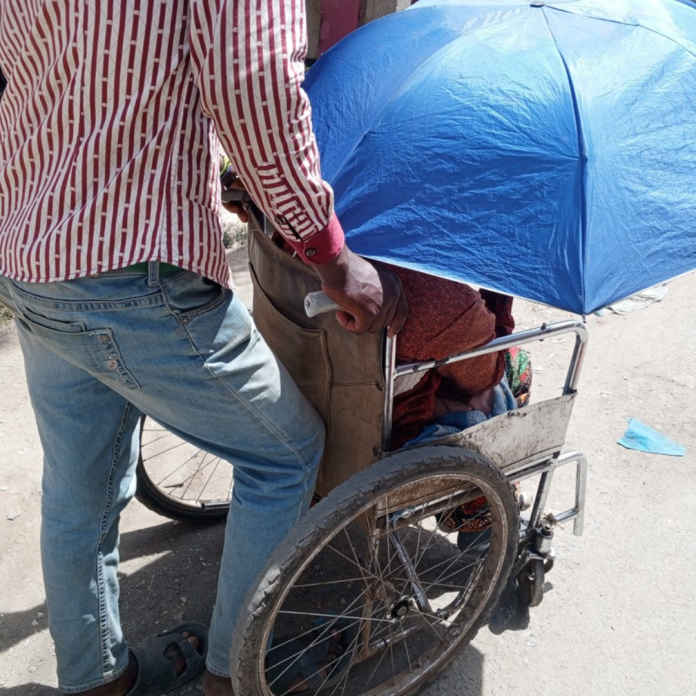In a country where disability rights have made notable strides, a disturbing trend is now raising alarm among authorities and advocates alike. The National Council for Persons with Disabilities (NCPWD) has called for an immediate investigation into what it describes as a surge of organized street begging — a trend now believed to be tied to human trafficking rings exploiting people with disabilities, including minors.
But this isn’t just a story of poverty — it’s one of systemic exploitation, transnational networks, and a humanitarian crisis hiding in plain sight.
Speaking at a regional forum in Nakuru, NCPWD Rift Valley Director Isaac Rogito warned that children with disabilities — some reportedly trafficked from as far as the Democratic Republic of Congo, Tanzania, Burundi, Rwanda, and Uganda — are being funneled into Kenya under false pretenses and forced into a life of forced begging.
“These are not isolated cases,” Rogito said. “We have intelligence that shows this is a coordinated regional syndicate, preying on disabled children and using them as tools for profit. They’re promised quick money, but most of the earnings are seized by traffickers.”
According to the Council, many of the child beggars on Kenya’s streets are controlled by handlers who collect their daily earnings and shuttle them to begging “zones” — some in wheelchairs, others crawling along sidewalks. Often, the children live in communal rentals in low-income estates like Kwa Ronda, Manyani, and Lake View — rented not by the beggars, but by those who exploit them.
Behind this facade of hardship is a chilling system: minors moved like chess pieces, watched by teenage boys who serve as scouts and enforcers. Those who don’t meet daily collection targets are beaten or starved. Some young girls are even raped and impregnated — because a disabled mother begging with a child reportedly draws more sympathy and more money.
One such victim, 16-year-old Aadila, told Kenya News Agency she was trafficked into Kenya from Tanzania in 2022. Promised a modest income and decent shelter, she ended up living in a dingy apartment with several others and forced to beg under threats of violence.
“I was told I could make Sh25,000 a month,” she recalled. “But everything I made was collected at the end of each day. If I didn’t hit the target, I wouldn’t eat.”
Josephine Mahinda, Project Coordinator of the Disability Resource Information Center, says the situation is not only a national disgrace, but also a serious erosion of dignity for local persons with disabilities (PWDs) who work hard to overcome barriers.
“What’s happening on our streets isn’t just begging — it’s emotional extortion, it’s human trafficking, it’s exploitation,” she said. “And the tragic part is that the public, in trying to help, is unknowingly fueling this cycle.”
Mahinda pointed out that despite efforts like the Access to Government Procurement Opportunities (AGPO) — a flagship program offering 30% of public tenders to women, youth, and PWDs — progress is being undermined by these cartels. “Our policies are being drowned out by a criminal economy that preys on suffering,” she added.
Efforts to intercept the traffickers remain stifled by legal and logistical barriers. Repatriating a foreign minor, even one exploited, is a long process involving arrest, court proceedings, and clearance from children’s departments. And even when repatriation happens, many quickly return — finding their way back across porous borders.
“This is a regional problem,” said former civic leader William Ating’a. “And yet our regional policies — especially visa-free travel under EAC integration — have inadvertently opened the floodgates to cross-border trafficking rings hiding behind humanitarian language.”
As Kenya continues to pursue pan-African ideals, balancing open borders with national security and human rights becomes more complex. Who protects the vulnerable when systems are weaponized against them?
Even street vendors like Joab Odinga, who operates a tea kiosk on Oginga Odinga Road, have observed the unsettling patterns. “You see the same faces every day,” he said. “They’re dropped off in the morning, moved around by different boys, and then disappear after dark. It’s a business.”
Investigative efforts by Kenya News Agency yielded limited direct testimony — many of the child beggars either stayed silent or, like 7-year-old Juma, turned away when asked who brought them.
“They’re afraid,” one observer said. “And that’s exactly what the traffickers count on — silence.”
As Kenya debates how to respond, one question looms: Can we continue turning a blind eye, handing over loose change, while the real profiteers remain in the shadows?
Until there is stronger cross-border cooperation, targeted law enforcement, and sustained support for both local and foreign disabled individuals, the streets may continue to serve as the frontline of an exploitative business that thrives in plain sight — yet remains largely ignored.


